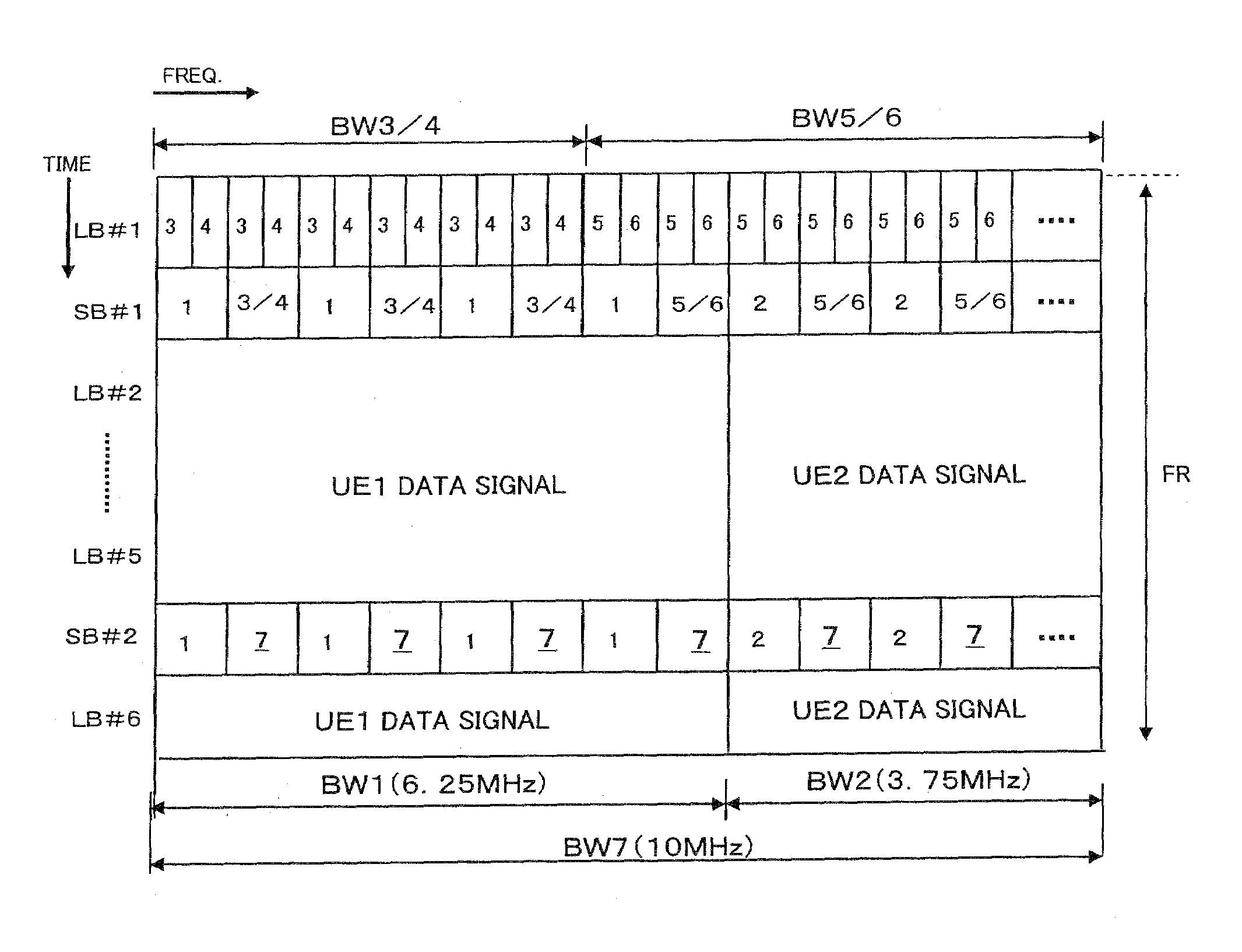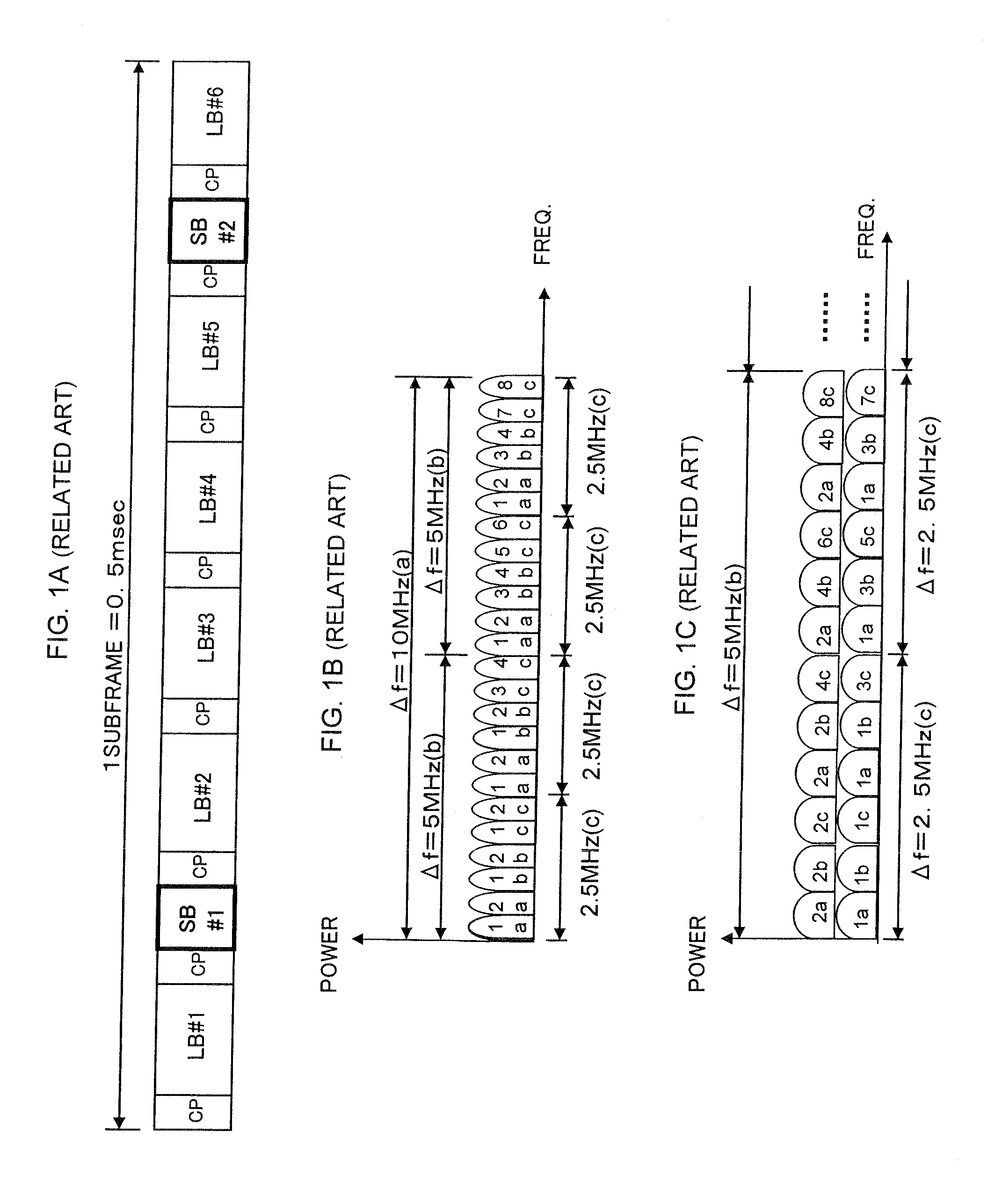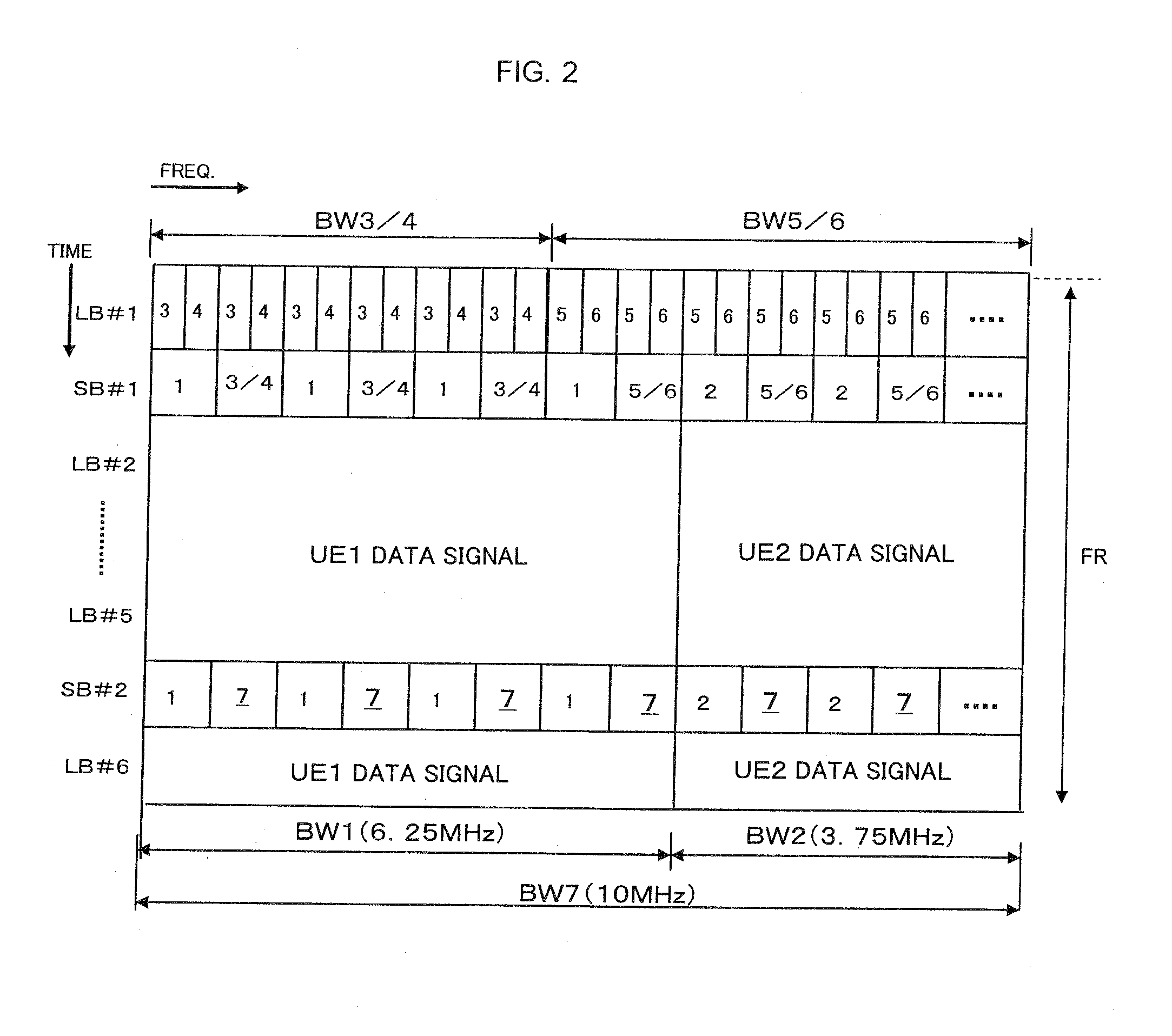Reference signal multiplexing and resource allocation
a reference signal and multiplexing technology, applied in multiplex communication, transmission path division, wireless commuication services, etc., can solve the problems of short sequence length of each reference signal, inability to exploit merit, and decrease in the number of cazac sequences that can be secured, so as to reduce the restriction on the number of reference signal sequences
- Summary
- Abstract
- Description
- Claims
- Application Information
AI Technical Summary
Benefits of technology
Problems solved by technology
Method used
Image
Examples
first exemplary embodiment
1. First Exemplary Embodiment
1.1) Resource Allocation
[0038]FIG. 2 is a diagram schematically showing an example of a method for multiplexing reference signals according to a first exemplary embodiment of the present invention. In this example, it is assumed that the frame structure shown in FIG. 1A is used, in which one frame (sub-frame) includes long blocks LB#1 to LB#6, short blocks SB#1 and SB#2, and cyclic prefixes (CP), with the short block SB#1 being inserted between the long blocks LB#1 and LB#2, and the short block SB#2 being inserted between the long blocks LB#5 and LB#6. In addition, it is assumed that L1 / L2 control signals are allocated the long block LB#1, that reference signals (also referred to as pilot signals) are allocated the short blocks SB#1 and SB#2, and that data signals are allocated the long blocks LB#2 to LB#6. A time interval between the short blocks SB#1 and SB#2, which reference signals are allocated, is set so that fading variance in each channel during ...
first example
[0057]It is assumed that demodulation / detection reference signals are multiplexed as described above in the section 1.2. In this state, for example, if the mobile station UE7 makes an entry for channel-dependent scheduling with its CQI estimation range set as a bandwidth BW7=10 MHz, then a reference signal for estimation of the channel quality of the mobile station UE7 should be allocated a short block.
[0058]In this case, first, it is checked whether or not an unoccupied frequency resource is present in the short block SB#2, which is subsequent to the short block SB#1. This is because the possibility of the presence of an unoccupied frequency resource applying to the above-described item (1), “a frequency resource that is not and will not be allocated for a demodulation / detection reference signal,” or an unoccupied frequency resource applying to the above-described item (2), “a frequency resource that can be allocated for a demodulation / detection reference signal and is not currentl...
second example
[0060]For example, it is assumed that the bandwidth BW7, which is the CQI estimation range for the mobile station UE7, is 6.25 MHz, the same as the frequency bandwidth BW1 for the mobile station UE1. If an unoccupied frequency resource as required is not present in the short block SB#2, then it is checked whether or not an unoccupied frequency resource is present in the short block SB#1. Although the whole short block SB#1 is occupied by the reference signals for demodulation / detection of data and control signals, the transmission bandwidth BW1 of the reference signal for demodulation / detection of the data signal matches with the transmission bandwidth BW7 required by the mobile station UE7, and the maximum number of signals that can be multiplexed by CDM in the short block SB#1 is not smaller than two. This fact meets the above-described condition A. Accordingly, a CQI estimation reference signal of the mobile station UE7 is allocated a frequency resource by being multiplexed by CD...
PUM
 Login to View More
Login to View More Abstract
Description
Claims
Application Information
 Login to View More
Login to View More - R&D
- Intellectual Property
- Life Sciences
- Materials
- Tech Scout
- Unparalleled Data Quality
- Higher Quality Content
- 60% Fewer Hallucinations
Browse by: Latest US Patents, China's latest patents, Technical Efficacy Thesaurus, Application Domain, Technology Topic, Popular Technical Reports.
© 2025 PatSnap. All rights reserved.Legal|Privacy policy|Modern Slavery Act Transparency Statement|Sitemap|About US| Contact US: help@patsnap.com



